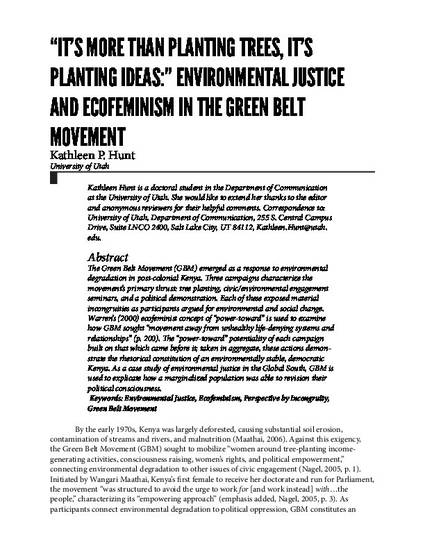
Presentation
“It’s more than planting trees, it’s planting ideas”: The rhetorical power of bodies in Kenya’s Green Belt Movement
11th Biennial Conference on Communication and the Environment
(2012)
Abstract
The Green Belt Movement (GBM) emerged as a response to environmental
degradation in post-colonial Kenya. Three campaigns characterize the
movement’s primary thrust: tree planting, civic/environmental engagement
seminars, and a political demonstration. Each of these exposed material
incongruities as participants argued for environmental and social change.
Warren’s (2000) ecofeminist concept of “power-toward” is used to examine
how GBM sought “movement away from unhealthy life-denying systems and
relationships” (p. 200). The “power-toward” potentiality of each campaign
built on that which came before it; taken in aggregate, these actions demonstrate
the rhetorical constitution of an environmentally stable, democratic
Kenya. As a case study of environmental justice in the Global South, GBM is
used to explicate how a marginalized population was able to revision their
political consciousness.
Keywords
- Environmental Justice,
- Ecofeminism,
- Perspective by Incongruity,
- Green Belt Movement
Disciplines
Publication Date
2012
Location
El Paso, TX
Comments
Copyright 2012 The Authors
Citation Information
Kathleen P. Hunt. "“It’s more than planting trees, it’s planting ideas”: The rhetorical power of bodies in Kenya’s Green Belt Movement" 11th Biennial Conference on Communication and the Environment (2012) Available at: http://works.bepress.com/kathleen-hunt/4/
